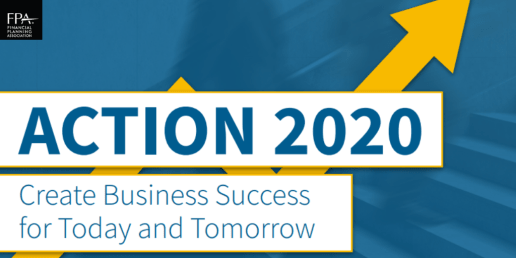Technology always evolves. It seems like every day there are new options to help streamline processes and change workflows all with the promise of optimizing your business.
As a business owner, you are always on the lookout for ways to improve yourself and your business, but it is important that you take the time to evaluate a new piece of technology and how it will impact you before adopting it into your practice.
The right technology can help take your business to the next level. How do you know if a new system is right for you? Check out these three things to find out.
Know Your Why
One of the most important elements of implementing new technology into your practice is that it adds concrete value. As financial planners, you know the importance of asking the question: why? You talk about it with your clients all the time; getting them to think deeper about the things that they want and the ways it will make their lives better.
You can use this same tactic when thinking about your business. New technology can be exciting, but I encourage you to think through the following questions:
- Why are you looking to add this new system into your services?
- Is this system a replacement to another one or an addition?
- How will this system add new value to your business?
- In what ways will you maximize this system?
- How will the transition or overlap impact your employees and your clients?
These questions are designed to get you to think through the practical elements that come along with adding new technology. Understanding the software itself and the impact it will have on your company will help you establish your reason, your why for adopting it.
The Technology Itself Matters
Once you decide how the desired system will add value to your company, you then have to take a look at it and decide how you will maximize the use you, your team and your clients will get from it.
The first place to start is ensuring that the system will be a good fit for your company. Ask yourself:
Do you plan to use the full functionality of the system or are you only interested in one key feature?
If you find yourself drawn to only a handful of pieces you like, you won’t be able to maximize the system and should keep looking for other options, because it won’t be worth it financially. Robust systems are costly, which is why you need to think through the practical implementation to see if you will get enough out of it.
The next thing to look at is the way the new system will interact with your existing technology infrastructure. Do you already have a system that offers a similar outcome? Will this new system increase in quality or functionality? Before onboarding something new, it’s important to look at what you already have, and the ways the new system is or isn’t helping you reach your goals.
If you decide that a new system would be a better fit for you, it may be time to eliminate a few other systems to help with your budget. Take, for example, payments and contracts. Before you may have been using two systems to send a client their contract and another to collect their payment when you could instead look into a system that offers both features. This will improve your budget because you will be paying for one system, not two and will increase the ease and function for your clients as well.
Deciding whether to bring on new technology should be a team effort. Be sure to include other members of your team and create a task force to help you decide what the best move will be. Each person on your team brings something special to the table, let them help you.
Be sure to use all the resources you have at your disposal when you are implementing your new software. Most technology companies will help you onboard the system, so take it! Tap into those resources to make the onboarding and training process easier for you and your team.
External Versus Internal Implementation
As we have discussed, it’s important to look at the way your new technology will impact your clients as well as your team. While a new process will always impact both in some way, different pieces of technology can affect one group more than the other. Let’s take a look at the ways your approach should change if the technology is client-facing or internal.
Client facing technology needs to have a strong, organized rollout process. Many firms use this process for all incoming clients and also establish a communication plan for existing clients to alert them to the changes and what to expect moving forward.
For a more streamlined process, consider providing the new clients with video tutorials, how-to’s and other helpful guides so that they can essentially onboard themselves while you train your team to answer questions and communicate with clients about the system. Change is hard for everyone, and it will be for your clients so try to focus more on the benefits this new system will provide them as opposed to the difficult change.
While client-facing software may seem more difficult to implement, internal software can come with just as many challenges. If this new software will directly impact a team member’s job, approach the conversation with care and use the tools available to you to help make their transition easier.
You can do this by holding a meeting to explain the new platform and its values. Be as transparent as you see fit with a timeline for adopting the new system and graciously accept feedback on its use and function for them.
Onboarding new technology can be difficult, but it is a wonderful way to push your business forward. Once you establish your purpose and mission for the technology, know how it will be used, and make a plan for implementing it as smooth as possible, you will be on your way to success.

Charesse Hagan helps financial planners work smarter, grow their firms and offer exceptional services to their clients. She holds a bachelor’s degree in business administration and is an operations consultant at Charesse J. Hagan, LLC, and an FPA Coaches Corner coach for technology and operations. Find more resources from Hagan here. Connect with her on LinkedIn.

Editor’s note: A version of this article first appeared in the September 2019 issue of FPA Next Generation Planner, a monthly app-only publication that is geared toward people new to the profession. Download the app today. Stay tuned for your February issue, which drops the first week in February.
Also, want to read more from Hagan and the other FPA Coaches? Check out the latest whitepaper from all the coaches titled “Action 2020: Create Business Success for Today and Tomorrow.”

Leave a Reply